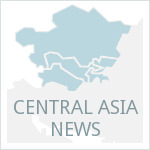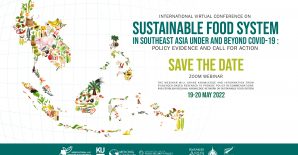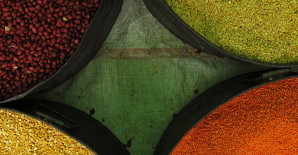News
Uzbekistan to expand export destinations for fruits and vegetables
In an interview with Russian media outlets, chairman of the Uzbekozikovkatholding company Tohirjon Zhalilov claimed that Uzbek fruits and vegetables will enter new markets in 2018. His company signed contracts with several Asian and European countries in 2017 and may expand to Africa and the Western Hemisphere in the next few years. – AzerNews
Tajikistan: results of livelihood improvement of rural populations project in Rasht Valley
A UNDP program aimed at improving the livelihoods of rural populations has been implemented in the Rasht, Tojikobod, and Lakhsh districts of Tajikistan. The three-year initiative was launched in 2014 with financing by the Russian government and has supported 84 infrastructure-building projects and 2,500 microloans to vulnerable segments of the population. The program has worked with local officials to introduce public-private partnerships and other rural employment creation opportunities. Examples of some of the projects can be found in the Russian version of this article. – Asia Plus
Development fund to allocate $10 million for loans for small businesses
The Russian-Kyrgyz Development Fund will allocate $10 million for a microfinance program for small businesses in Kyrgyzstan. Rural enterprises and companies supporting agriculture will be eligible for loans along with those in the tourism and high-tech manufacturing sector. – 24.kg
Chinese fisheries academy offers aquaculture help to Uzbekistan, Tajikistan
The China Academy of Fishery Sciences has signed a deal with Tajikistan and Uzbekistan to promote the aquaculture sector in Central Asia. Academy director Cui Li Feng suggested that his institution could provide advice on developing aquaculture in high saline soil environments. – Seafood Source
Analysis & Other Information
Kazakhstan prizes its cowboys, but few want to saddle up for harsh life
This photojournal feature in the New York Times documents the challenges faced by livestock farmers in Kazakhstan, where a rapidly-modernizing economy is making cattle-herding less attractive for a younger generation. Recent government efforts to direct investment into the sector have largely bypassed small herders like those featured in the article. – New York Times
China's ambitious new 'port' in landlocked Kazakhstan
China’s largest shipping company China Ocean Shipping Co. (COSCO) became the 49 percent owner of a tract of land in Kazakhstan that may become part of an important transit hub under the “One Belt One Road” project. A newly-constructed town called Nurkent houses the 1,200 workers and administrative staff operating the nearby Khorgos dry port but there are plans to possibly expand it to accommodate 100,000 residents. Chinese manufacturers are eyeing an overland route to Europe that would cut shipping times by more than half compared to the 45 to 50 days it currently takes by sea. – Straits Times
Publications & Reports
Spatial and temporal characteristics of droughts in Central Asia during 1966-2015
H. Guo, A. Bao, T. Liu, G. Jiapaer, F. Ndayisaba, L. Jiang, A. Kurban, P. De Maeyer (2017). Science of the Total Environment, 624, pp. 1523-1538.
Impact of the Customs Union of Belarus, Kazakhstan, and Russia on regional trade
B. Mukhamediyev, A. Khitakhunov (2017). Eurasian Economic Perspectives, 8(2), pp. 299-310.
Interdependence of macroeconomic indicators and inequality in Kazakhstan and its main trading partners
B. Mukhamediyev, T. Kudasheva, A. Khitakhunov (2017). Eurasian Economic Perspectives, 8(2), pp. 75-88.
FEEDcities project: the food environment description in cities in Eastern Europe and Central Asia-Kyrgyzstan
P. Padrao, G. Albuquerque, N. Lunet (2017). World Health Organization Regional Office for Europe. Technical report.
Archived issues of the news digest can be found on the Central Asia page under the ReSAKSS Asia website: http://resakss-asia.org/regions/central-asia. A link to the newsletter can be found under Blog Posts.
The articles included in this news digest have been generated from online sources. Any opinions stated herein are not representative of, or endorsed by, the International Food Policy Research Institute or its partners.



